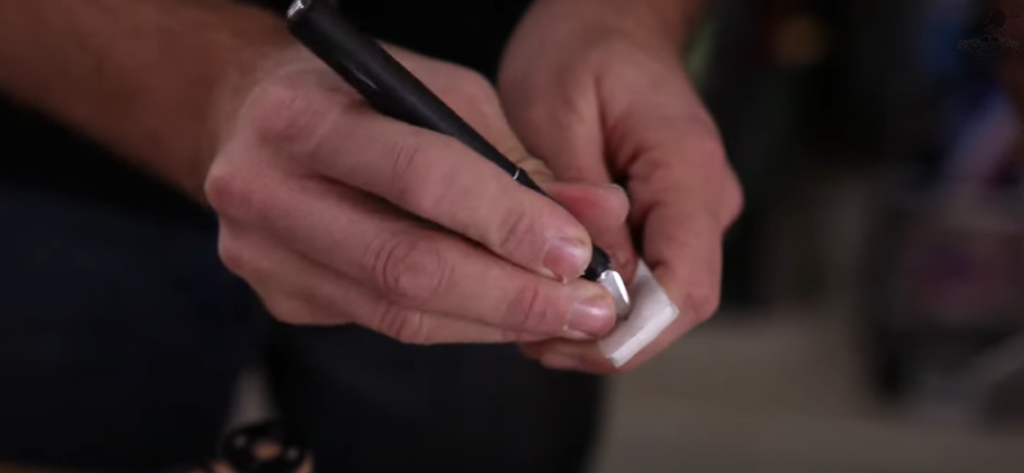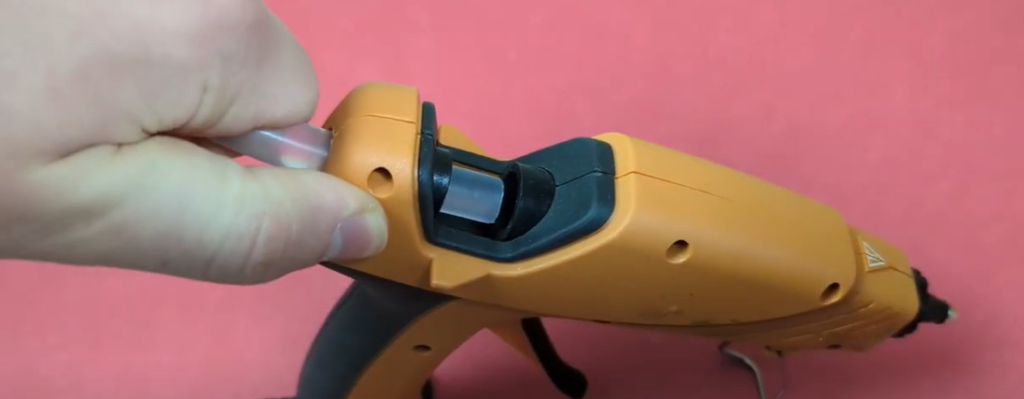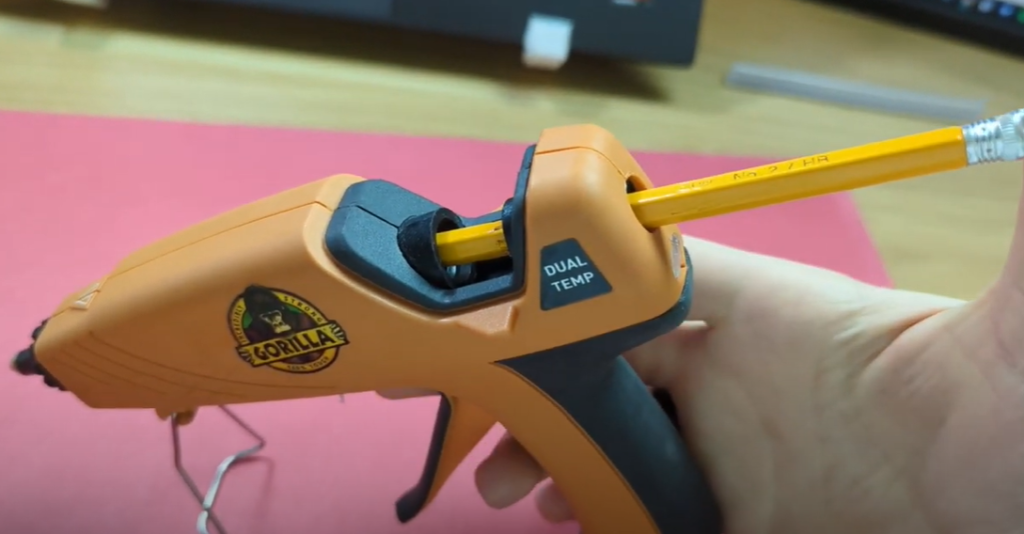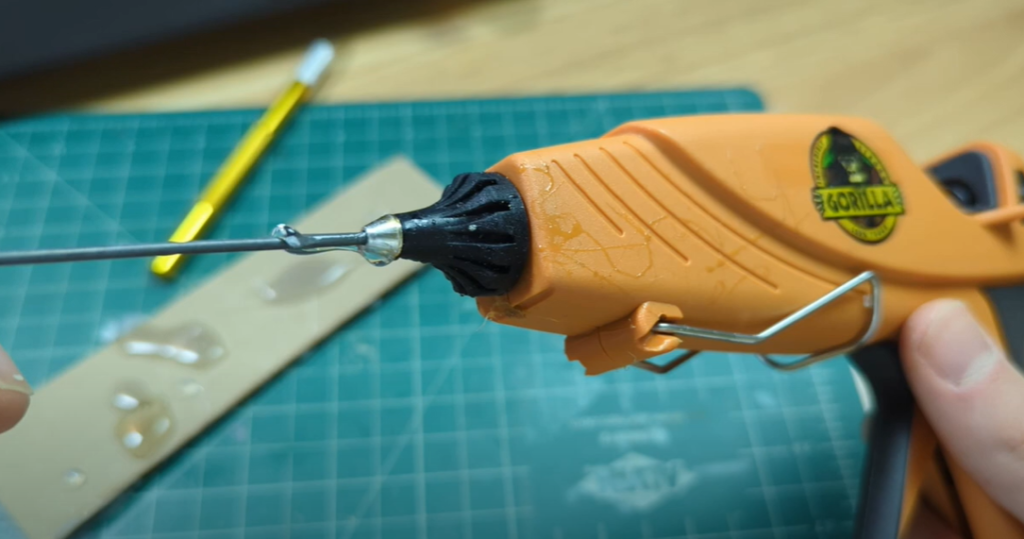Do you ever find yourself in the midst of a crafting project and wishing you had the ability to take your supplies with you anywhere? If so, have you ever thought about taking your hot glue gun on vacation with you or using it during a layover? Many traveling crafters ask themselves if they can bring their glue guns on planes.Luckily, we’ve got all the answers for anyone who wants to know if they’ll be able to use their hot glue gun while flying, including comprehensive information on TSA regulations, airline policies, and aviation guidelines. With this knowledge in hand, you can ensure a hassle-free and informed journey, making the most of your creative tools wherever you go. Continue reading to discover whether bringing a hot glue gun on your next flight is permissible and more essential information!
Table of Contents
What is a hot glue gun?
This is a handheld device used to apply adhesive for various crafting and DIY projects. This versatile tool heats up a cylindrical stick of solid glue until it liquefies, then dispenses the hot glue through a small nozzle when the trigger is pressed. Hot melt glue guns are valued for their ability to bond a wide range of materials quickly and securely, including paper, plastic, wood, fabric, and ceramics. They are portable, easy to use, and relatively safe, making them a staple in many crafters’ tool kits.

How does a hot glue gun work?
This tool operates on a fairly simple mechanism. The glue stick is inserted at the back of the gun where a heating element is present. As the glue stick advances towards this heating element, it melts into a liquid state. The melted glue then collects in the chamber at the front of the gun, awaiting application. When the trigger is squeezed, it pushes the glue stick further into the heating element, thereby forcing the melted glue out of the nozzle. [1] This allows the user to control the amount of glue that is dispensed, ensuring precise application for various craft projects.
Hot glue guns are utilized in a wide array of settings. For hobbyists and DIY enthusiasts, they are an essential tool for crafting projects, including scrapbooking, home decor, and model building. Guns are equally important in professional environments, notably in floristry, where they are utilized to firmly secure flowers into beautiful arrangements. In educational environments, they are employed in art classes to facilitate creative projects. They are even used in certain industrial applications for quick, strong bonding of materials. Despite its simplicity, the hot glue gun’s versatility and practicality make it a valuable tool across various domains.
Is a Hot Glue Gun Allowed on a Plane?
The question of whether this tool is allowed on a plane greatly depends on the specific guidelines set forth by the aviation authorities of the country in question, as well as the policies of the individual airline. In general terms, the Transportation Security Administration (TSA) in the United States allows for glue guns to be transported in checked baggage, and in carry-on luggage. [2] This is due to safety concerns regarding the heated element and potential for misuse.
However, the regulations can vary depending on the country or airline, so it’s crucial to check the specific rules before planning to bring a hot glue gun on a flight. It’s also worth noting that even if a hot glue gun is permitted in checked luggage, the availability of an appropriate power source to use it during the flight is not guaranteed. Hence, crafters planning to work on their projects during their journey should consider alternative adhesive methods that are more travel-friendly and compliant with aviation safety regulations.

Are hot glue guns safe on a Plane?
Hot glue guns, by their nature, are generally safe devices when used correctly. They are designed with safety features such as insulated nozzles and built-in stands to prevent accidental burns or damage. However, their use on an airplane poses certain safety concerns.
The primary concern is the heat generated by the device, which can reach up to 400 degrees Fahrenheit. This level of heat in the confined space of an airplane could potentially pose a fire risk. Additionally, the potential for misuse cannot be overlooked. For these reasons, while a glue gun might be safe under normal circumstances, it is not considered safe for use on an airplane. Therefore, it is typically not allowed in carry-on luggage. It’s always advisable to refer to the specific rules of the airline and aviation authority before attempting to travel with such devices.
The rules for hot glue guns in a luggage
- Cool and Unplugged: Before packing, ensure the hot melt glue gun has cooled down completely after use. Never pack it while it’s still hot or plugged in.
- Protective Packaging: It’s advisable to wrap your hot glue gun in a protective case or bag. This precaution ensures the safe transportation of the device and reduces the risk of accidents or mishaps during travel.
- Glue Stick Securement: Glue sticks should also be carefully packed. Make sure they’re stored in a way that they won’t break or melt.
- Checked Baggage Only: As per TSA regulations, hot glue guns are exclusively allowed in checked baggage and are not permitted in carry-on luggage.
- Refer to Airline and Country Specific Rules: It is imperative to always verify and adhere to the particular rules set forth by your airline and the aviation authorities of the countries you are traveling to or from.
- Be Prepared for Consequences: Ignorance of these rules might lead to confiscation of the device or, in some cases, fines. Always prioritize being properly informed and prepared.
Adhering to these specific guidelines for packing hot glue guns in your luggage will guarantee a seamless and stress-free travel experience.

Can I take glue on a Plane?
In general, taking glue on a plane is allowed by most airlines, but there are certain restrictions that apply. According to the TSA, travelers can carry liquid, aerosol, gel or paste form of adhesives in their carry-on luggage, but it must be in containers of 3.4 ounces (100ml) or less.Ensure that these containers are stored in one clear, quart-sized, zip-top bag. [3] Full-size containers of glue, even if partially full, are only allowed in checked baggage. When it comes to solid glue sticks or glue pens, you have the flexibility to pack them without any restrictions.
However, the rules can vary depending on the type of glue (for instance, industrial adhesive might have different restrictions), the country, and the airline. Therefore, it is recommended to check with the specific airline and the aviation authorities of the countries you are traveling to or from for their exact regulations regarding carrying glue on a plane. Remember, failure to comply with these rules can lead to confiscation of the items, delays at security, and, in some cases, fines.
Is hot glue hazardous?
While hot glue itself is generally not considered a hazardous material, caution should still be exercised while using it due to the high temperatures involved. Hot glue, when melted, can reach temperatures of up to 380-420 degrees Fahrenheit. Contact with skin at such high temperatures can cause burns and blisters. Moreover, the glue is sticky when heated and can adhere to the skin, potentially worsening the burn. Hence, it’s advisable to use a craft mat or a piece of aluminum foil to catch any drips, and always handle the hot glue gun with a firm grip to prevent accidental drops which could lead to injury.
Additionally, while rare, some people may experience an allergic reaction to the ingredients in hot glue. Symptoms may include redness, swelling, headaches and itching at the site of contact. [4] If such symptoms are observed, the working process should be discontinued, and medical advice should be sought.
It’s also worth noting that hot glue gives off fumes when melted, and while these are typically low in toxicity, they can cause irritation to the eyes and respiratory tract if exposure is prolonged. For safety reasons, it is recommended to use hot glue in a space with good ventilation. Thus, while hot glue is not classified as a hazardous substance, responsible and cautious use is advised to mitigate potential risks.
What glues are allowed and disallowed on a plane?
As per the TSA regulations and airline policies, many forms of glue are permissible on planes, but certain restrictions apply.
- Solid glue sticks and pens generally do not have restrictions and can be included any baggage.
- Full-sized containers, even if partially full, are only permitted in checked luggage.
- It’s worth noting that industrial glues or specialty adhesives may have different rules.
- Some types of glue, like super glue (Cyanoacrylate), are typically allowed but with quantity restrictions. [5]
- Meanwhile, certain forms of adhesives such as flammable or explosive glues are prohibited on a plane.
Travelers should always check with their specific airline and the aviation authorities of the countries they are traveling to or from to verify their respective rules about carrying glue on a plane.
How much glue can you take on a plane?
The quantity of glue permitted on an airplane is predominantly determined by the type and form of the adhesive, in addition to the specific airline regulations and aviation guidelines of different countries. Liquid, or paste adhesives are permitted in carry-on luggage as long as they adhere to the 3-1-1 rule — each container must be 3.4 ounces or less, and all containers must fit into one quart-sized, and zip-top bag.
Solid glues, such as glue sticks and pens, do not have quantity restrictions and can be carried in either checked or carry-on luggage. Industrial adhesives may be subject to certain stipulations depending on the airline and destination country’s regulations. Therefore, it is advisable to check with your specific airline and the aviation authorities of the countries you are traveling to or from for their exact rules regarding carrying glue on a plane. Failure to comply with these limitations can result in confiscation of the items, delays at security, and fines.
Frequently Asked Questions
Is A hot glue gun flammable?
Yes, hot glue guns use a flammable adhesive which releases heat and fumes upon melting. Therefore, it is important to use the gun in a well-ventilated area and handle it with care to avoid any potential safety hazards. Additionally, always store the glue sticks at room temperature and away from sources of heat or open flames. It’s best practice to use a craft mat or piece of aluminum foil beneath the glue gun to catch any drips. Additionally, it is advisable to wear protective gear such as gloves, long sleeves, and safety glasses while using a hot glue gun. Following these precautions can help ensure the safe operation of hot glue guns and minimize potential risks.

Can I take nail glue on an airplane?
Yes, you can take nail glue on an airplane, but there are certain restrictions to keep in mind. According to TSA regulations, liquid nail glue in your carry-on luggage must be in a container that is 3.4 ounces (100 ml) or less and must be in a clear, quart-sized, zip-top bag, as per the 3-1-1 rule. If you want to bring along a larger size of nail glue, you can pack it in your checked baggage. However, all airlines and countries may have their own specific regulations, so it is always advisable to check with your airline and the aviation authorities of the countries you are traveling to or from before packing nail glue in your luggage.
Is flammable allowed in checked baggage?
Flammable materials generally are not allowed in checked baggage. This includes flammable liquids, gasses, and solids. Examples of these items include but are not limited to: gasoline, lighter fluid, firecrackers, flares, and torch lighters. There might be certain exceptions for personal care items or medical necessities that contain flammable liquid; however, these are usually subject to specific packaging and quantity restrictions. It is always recommended to check with your airline and the Transportation Security Administration (TSA) or equivalent authority in your country for specific rules and restrictions. Non-compliance with these regulations can lead to fines and legal consequences.
What is the difference between a glue gun and a hot glue gun?
A glue gun and a hot glue gun essentially refer to the same tool, which is used to dispense hot-melt adhesive. The tool is often referred to as a “hot glue gun” to emphasize that the glue it uses needs to be heated before application. When the glue stick is inserted into the gun, it gets heated until it melts. When the trigger is squeezed, the molten glue is dispensed through the nozzle. The hot-melt adhesive cools and solidifies quickly upon application, allowing for immediate bonding of materials. Hot glue guns are widely used in arts and crafts projects, minor home repairs, and even in certain industrial applications. Regardless of the terminology used, safety precautions should always be observed when using these tools due to the high temperatures involved.
Are glue sticks flammable?
Glue sticks are generally non-flammable while in solid form. However, they do contain a type of thermoplastic adhesive which is designed to melt when exposed to high temperatures, such as those produced by a hot glue gun. While the melted adhesive itself can potentially catch fire if it comes into contact with an open flame, the risk of combustion is relatively low under normal usage conditions. Regardless, it is still important to handle glue sticks and hot glue guns with care, always keeping them away from heat sources and flammable materials to ensure safety.
Useful Video: Flite Test | Hot Glue Tricks
Conclusion
All in all, the answer to whether or not you can bring a hot glue gun on a plane is both yes and no. It ultimately depends on the airline’s policies and regulations, as well as what restrictions are imposed by local authorities. Generally speaking, however, it’s best if you check with your airline prior to bringing a hot glue gun on to a flight.
Additionally, if you have any hazardous materials you want to transport via air travel, contact the airlines beforehand as they may require special instructions for handling such items safely. Finally, it is important to remember that safety should always be your number 1 priority when traveling via airplane so make sure to adhere to all of the associated precautions when packing for an upcoming flight!
References:
- https://lux-x.com/en/novosti/kak-pravilno-ispolzovat-i-nanosit-kley-v-stikah/
- https://twitter.com/AskTSA/status/1000012613407920130
- https://www.tsa.gov/travel/security-screening/liquids-rule
- https://craftsrider.com/is-hot-glue-toxic-to-humans/
- https://travelgeardiscounts.com/can-you-bring-super-glue-on-a-plane/






Leave a Reply